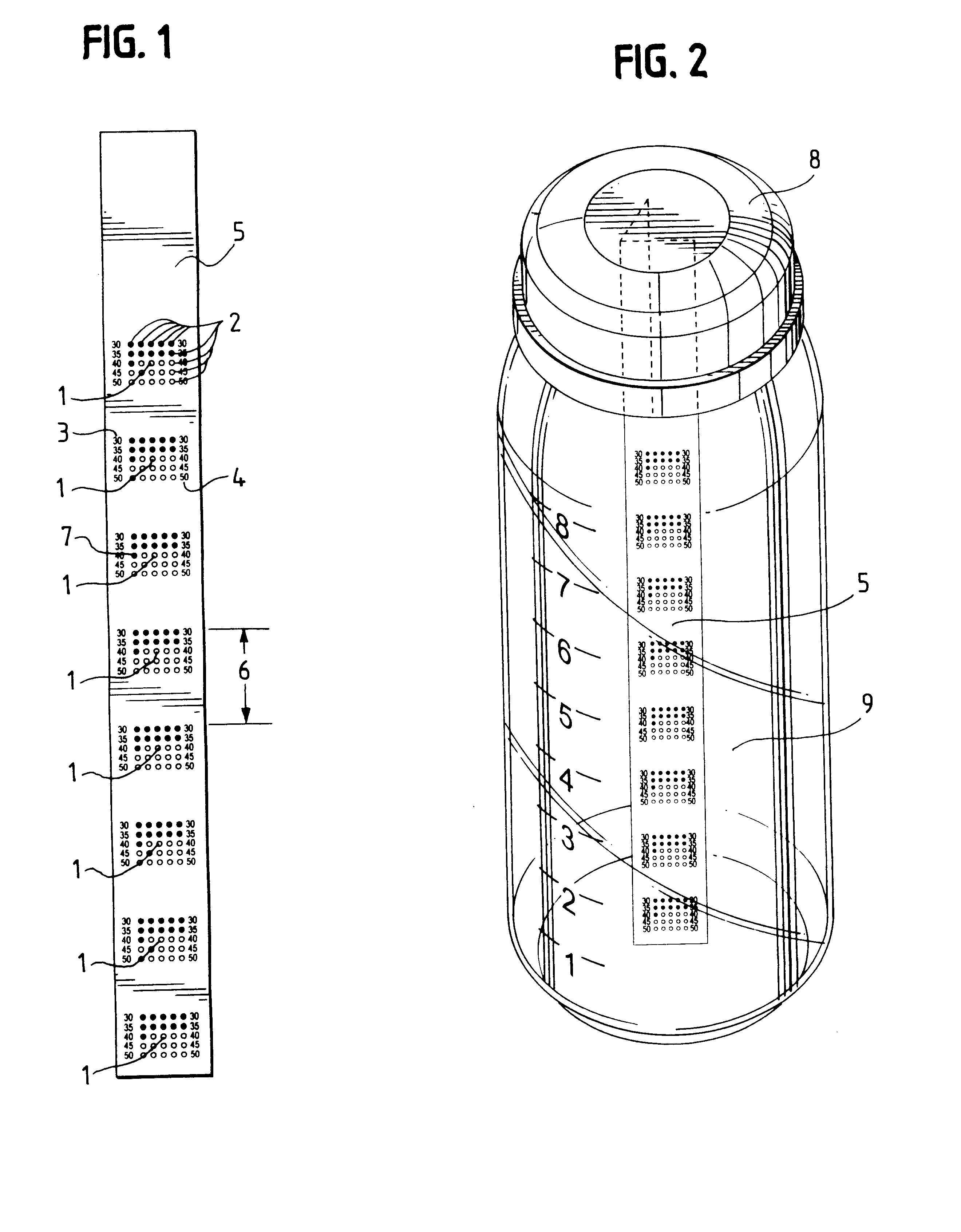Shielding method for microwave heating of infant formula to a safe and uniform temperature
a technology for shielding and infant formula, which is applied in the field of shielding methods for microwave heating of infant formula to a safe and uniform temperature, can solve the problems of uneven heating of baby formula, difficulty in finding a class of injuries of increasing frequency, and inconvenient us
- Summary
- Abstract
- Description
- Claims
- Application Information
AI Technical Summary
Benefits of technology
Problems solved by technology
Method used
Image
Examples
example 2
A shield made from a rectangular section of 3035 laminate having dimensions 5.08 cm (2.0 in).times.18.2 cm (7.17) with mitered ends as shown in FIG. 3. The corners were then cut at 45 degree angles 1.27 cm (1 / 2") in from the edges. The rectangular-cut laminate was wrapped around the circumference of the bottle so that the top edge of the shield was approx. 3.175 mm (1 / 8") above the 237 ml (8 oz) line on the bottle. The overlapping ends of the shield were taped together and retained on a cylindrical bottle by frictional engagement such that its upper edge which was located 9.5 mm (3 / 8") above the 8 oz mark.
example 3
A shield made from a rectangular section of 2007B laminate having dimensions 5.08 cm (2.0 in).times.18.2 cm (7.17) with mitered ends as shown in FIG. 4. The corners were then cut at 45 degree angles 1.27 cm (1 / 2") in from the edges. The rectangular-cut laminate was wrapped around the circumference of the bottle so that the top edge of the shield was approx. 3.175 mm (1 / 8") above the 237 ml (8 oz) line on the bottle. The overlapping ends of the shield were taped together and retained on a cylindrical bottle by frictional engagement such that its upper edge which was located 9.5 mm (3 / 8") above the 8 oz mark.
An alternative embodiment of this invention is a shield which is permanently affixed to the surface of the baby bottle. This offers the advantage of a single integral microwaveable baby bottle and eliminates the potential for forgetting to use the shield as presented with the removable type. On the other hand such a permanent type shield would represent greater costs, must be more...
example 4
A shield made from 0.0254 mm (0.001 in) aluminum foil of height 5.08 cm (2.0 in) permanently fixed to the surface of the bottle with a pressure sensitive rubber based adhesive so that its upper edge was located approximately 9.5 cm (3 / 8") above the 8 oz line marked on the bottle. The ends of the shield overlapped each other approximately 3.81 cm (11 / 2").
A fixed metallic coating also can be applied by spraying or pad printing using a conductive paint or ink. Of the commercially available conductive paints containing silver, nickel, silver / nickel alloys, and carbon compositions, only highly conductive formulations of silver inks yielded acceptable results.
PUM
 Login to View More
Login to View More Abstract
Description
Claims
Application Information
 Login to View More
Login to View More - R&D
- Intellectual Property
- Life Sciences
- Materials
- Tech Scout
- Unparalleled Data Quality
- Higher Quality Content
- 60% Fewer Hallucinations
Browse by: Latest US Patents, China's latest patents, Technical Efficacy Thesaurus, Application Domain, Technology Topic, Popular Technical Reports.
© 2025 PatSnap. All rights reserved.Legal|Privacy policy|Modern Slavery Act Transparency Statement|Sitemap|About US| Contact US: help@patsnap.com



